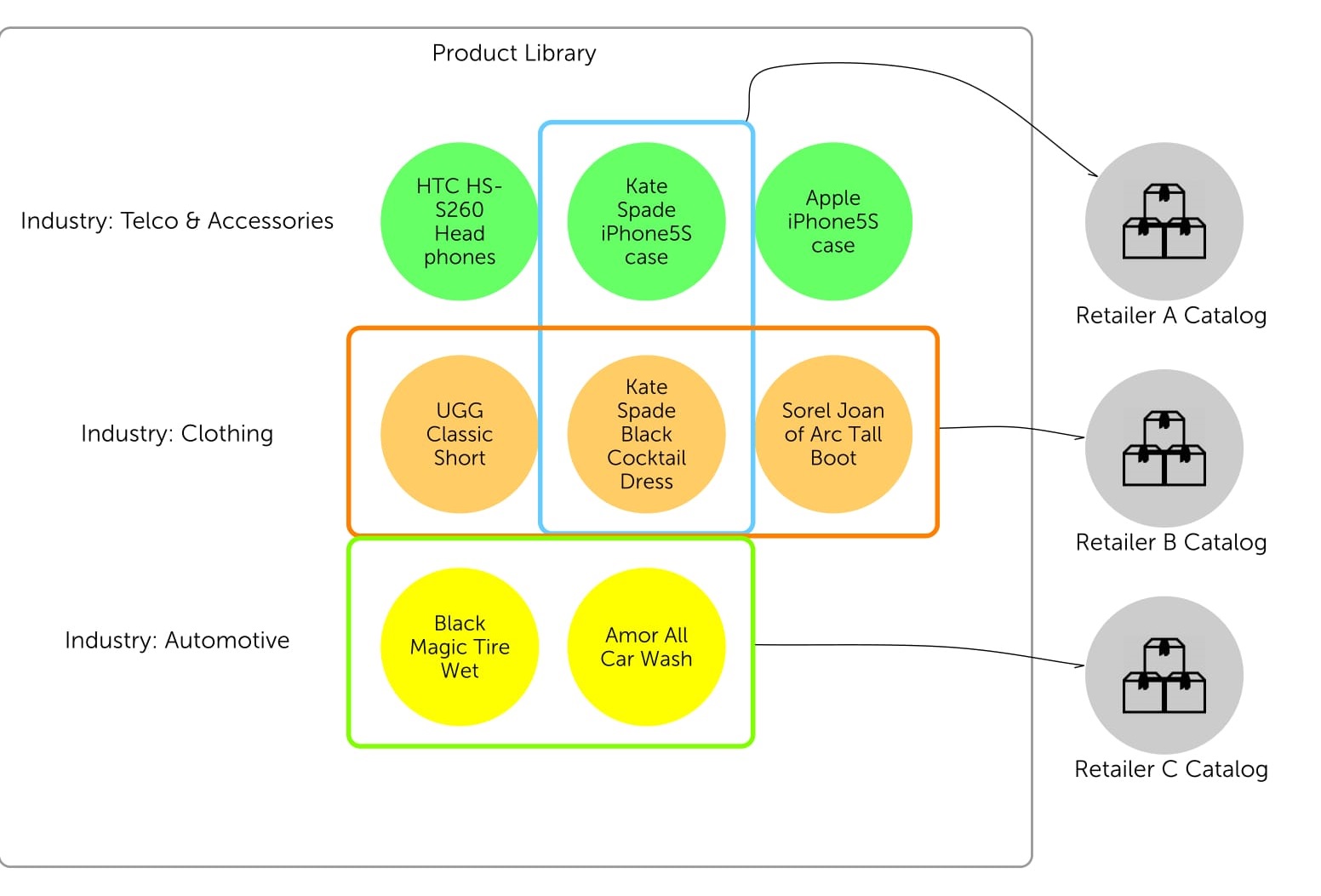Overview
This document outlines the following concepts:
- Product Library
- Retailer Catalog
- Industries
- Custom Products
- Curation
- Virtual Inventory
Product Library
Product Library provides retailers with a central hub of content from a variety of sources, including manufacturers, distributors and other suppliers.

Retailer Catalog
Retailers can select products from the Product Library to create a Retailer Catalog, a collection of products that can be sold.
Every Product in Product Library must belong to a single Classification Tree, referred to as an industry.
This is a similar model to iTunes where users have access to many different types of products such as songs, movies and books (Industries) in the iTunes Store (Product Library) from which they can build their library (Retailer Catalog).
As the image below illustrates, there is only one Product Library but many Retailer Catalogs, which may overlap and include Products across multiple industries.

Custom Products
If a Product does not exist in the Product Library, a Retailer can create a custom Product and add it to their Retailer Catalog.
This Product will only be visible by the Company that created it.
Using our iTunes metaphor, a user can add a home video (Custom Product) to their library (Retailer Catalog). A home video would not exist in the iTunes Store (Product Library), and once added the home video would only exist in the user’s own library - you would not want everyone seeing your home videos!
Curation
Products are funnelled into the Product Library through a number of different channels.
For the Wireless industry, iQmetrix Curators create accurate, up-to-date, rich product information available for retailers to consume.
For other industries, Retailers can create Products in the Product Library.
For more information about Product Structure see Product Structure.
Virtual Inventory
Using Dropship, retailers can showcase and sell a wide variety of unique, luxury and specialized items without having to invest in physical inventory.
This virtual inventory also allows retailers to expand the number of accessories and products they sell, creating a virtual aisle experience.